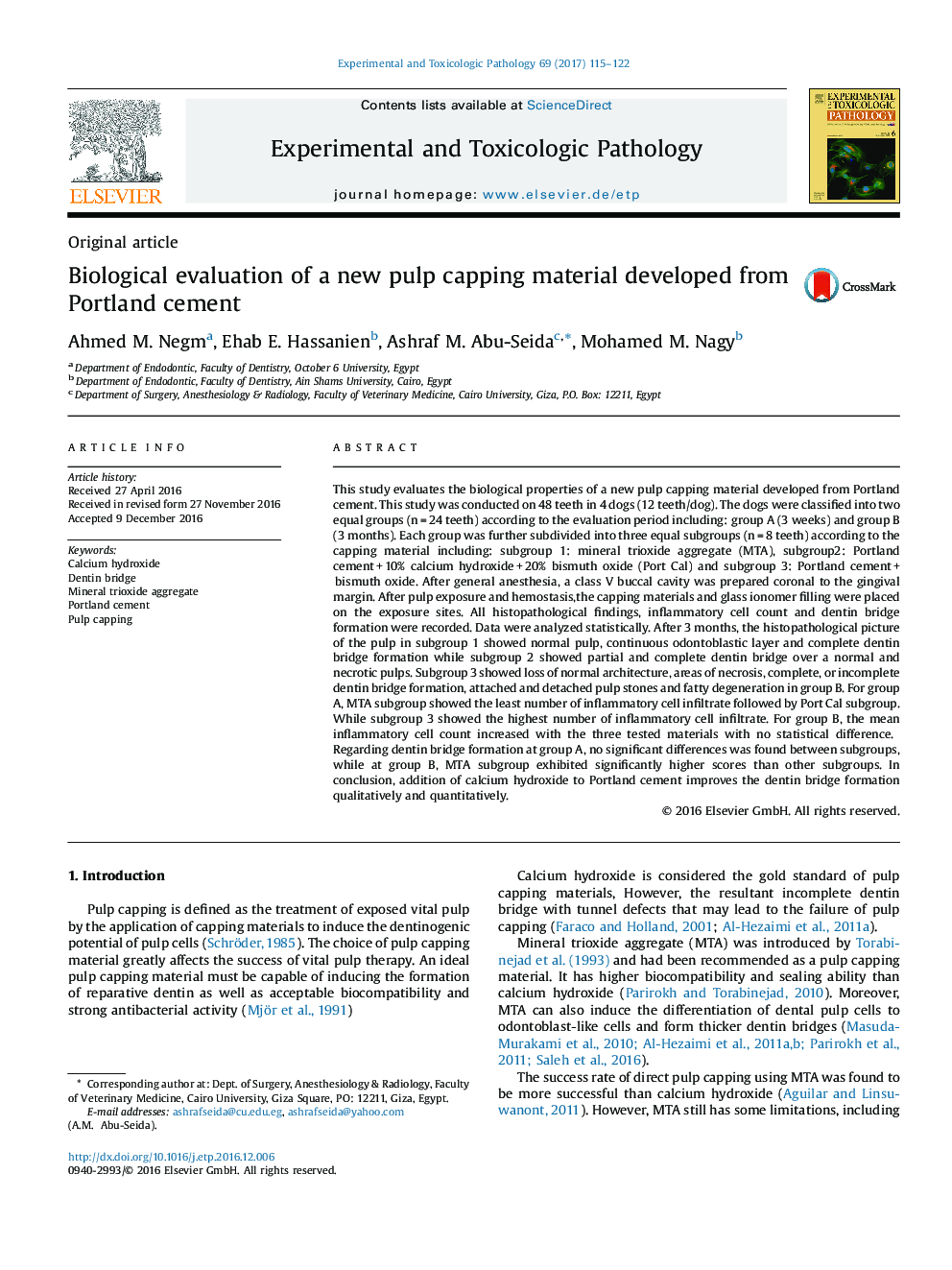| کد مقاله | کد نشریه | سال انتشار | مقاله انگلیسی | نسخه تمام متن |
|---|---|---|---|---|
| 5549844 | 1402904 | 2017 | 8 صفحه PDF | دانلود رایگان |
This study evaluates the biological properties of a new pulp capping material developed from Portland cement. This study was conducted on 48 teeth in 4 dogs (12 teeth/dog). The dogs were classified into two equal groups (n = 24 teeth) according to the evaluation period including: group A (3 weeks) and group B (3 months). Each group was further subdivided into three equal subgroups (n = 8 teeth) according to the capping material including: subgroup 1: mineral trioxide aggregate (MTA), subgroup2: Portland cement + 10% calcium hydroxide + 20% bismuth oxide (Port Cal) and subgroup 3: Portland cement + bismuth oxide. After general anesthesia, a class V buccal cavity was prepared coronal to the gingival margin. After pulp exposure and hemostasis,the capping materials and glass ionomer filling were placed on the exposure sites. All histopathological findings, inflammatory cell count and dentin bridge formation were recorded. Data were analyzed statistically. After 3 months, the histopathological picture of the pulp in subgroup 1 showed normal pulp, continuous odontoblastic layer and complete dentin bridge formation while subgroup 2 showed partial and complete dentin bridge over a normal and necrotic pulps. Subgroup 3 showed loss of normal architecture, areas of necrosis, complete, or incomplete dentin bridge formation, attached and detached pulp stones and fatty degeneration in group B. For group A, MTA subgroup showed the least number of inflammatory cell infiltrate followed by Port Cal subgroup. While subgroup 3 showed the highest number of inflammatory cell infiltrate. For group B, the mean inflammatory cell count increased with the three tested materials with no statistical difference. Regarding dentin bridge formation at group A, no significant differences was found between subgroups, while at group B, MTA subgroup exhibited significantly higher scores than other subgroups. In conclusion, addition of calcium hydroxide to Portland cement improves the dentin bridge formation qualitatively and quantitatively.
Journal: Experimental and Toxicologic Pathology - Volume 69, Issue 3, 2 March 2017, Pages 115-122
